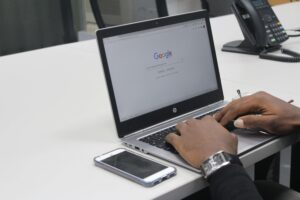Do you ever wonder why communicating with others is challenging or how to improve communication with somebody close to you at home, in your community or at work? As I often think about and work on this, the importance of curiosity has become clear to me.
The Cambridge Dictionary defines curiosity as “an eager wish to know or learn about something”. However, for many of us, curiosity can mean many different things and take many different forms. For me, curiosity is a way to inquire and learn more, a chance to better understand another’s thinking and,as a coach, to help clients explore deeply “the what and why” of what they want to improve.
Think about children and their curiosity to discover new things and do things by themselves. What is it that children do to show curiosity? I love watching my boys and their exploration of the world around them. I feel inspired seeing them challenging what they see or learning through doing and questioning. This curiosity they have drives them to question and to think of different and better ways to do things. For them it means asking questions, debating and physically doing the action or not doing it.
Some of the greatest inventions that have changed our lives in incredible ways . . .


This makes me think more about curiosity as it relates to me, my work and my life. Here are 3 ways that Ishow curiosity when interacting with others.
Ask Questions
One day at work I was very fixed on what I was seeing and hearing from a colleague, and I only viewed it from my own perspective. This narrow view impacted my communication interaction and limited my ability to explore greater opportunities. When I recognized this was happening I changed my approach and started to ask open questions to help him explore his thoughts and the reasons for them, and started listening attentively to what he was saying and asking.
Through this act of curiosity the speaker and listener can both gain deeper levels of awareness and more powerful ideas, learning and growth.
The role of questioning as a curiosity tool may take different forms depending on the situation. For me, as a leader and executive coach, questioning is about exploring the “who” or exploring deeply those points that relate to building awareness in a coachee. This allows them to reflect on areas they would like to take action on and “what” result they want to achieve.
Be Silent
Recently, I was exploring the coaching session target with a coaching client. At one point I asked a deep question. Initially the coachee responded “Hmmm, that is a good question . . . I don’t really know”. Normally I would jump in and ask more questions; however, something told me “Tim just wait a little bit more – be quiet”. I did and the coachee then continued to speak through what she was thinking and continued tobuild on her thoughts. In that silent space she had her “Aha Moment”. This allowed her to move forward on her objective and build a concrete action plan.
In this way, staying silent and giving time to speakers to think through what they want to say, can be one of the most powerful ways to show curiosity. Being silent might initially feel uncomfortable for you(like it did for me), but the more consciously you do it, the more natural it becomes. Trust the process and watch how it generates powerful results.

Be Physical
By this I mean show your curiosity through your body language in meetings, when coaching, networking or in general communication. In my role, I am very mindful of the signals people send me physically. This lets me know if what I am saying is clear, if someone agrees or disagrees with me, if they need more information or have questions. The opposite is also very important. What signals do I send to others when they are talking? This will impact on how they feel, what they say and how they might react. Being conscious of our physical signals allows us to manage our impact. How can we show our curiosity through being physical?
When I am coaching I show curiosity to the speaker by maintaining eye contact, leaning in to listen, nodding my head and gesturing when speaking. By doing this, it helps the coachee feel that I am fully listening to him, building trust and making the relationship stronger. This encourages the coachee to share more vulnerable points that they wish to explore as part of their development. In other business situations actions like this encourage psychological safety* in teams, building trust and creating open communication.
What is critical about each of these actions is that they are done consciously. Initially some may feel uncomfortable, or you may want just to jump in – don’t . . . Trust the process and be conscious of what you are trying to achieve. Have fun trying these techniques and please share best practices that you use to show curiosity.
“Listen with curiosity. Speak with honesty. Act with integrity. The greatest problem with communication is we don’t listen to understand. We listen to reply. When we listen with curiosity, we don’t listen with the intent to reply. We listen for what’s behind the words.”
— Roy T. Bennett, The Light in the Heart
*You can learn more about Psychological Safety through the following links:
– The Fearless Organization by Amy C. Edmondson
https://www.amazon.com/Fearless-Organization-Psychological-Workplace-Innovation/dp/1119477247
– Performing Teams Need Psychological Safety. Here’s How to Create It by Laura Delizonna
https://hbr.org/2017/08/high-performing-teams-need-psychological-safety-heres-how-to-create-it
